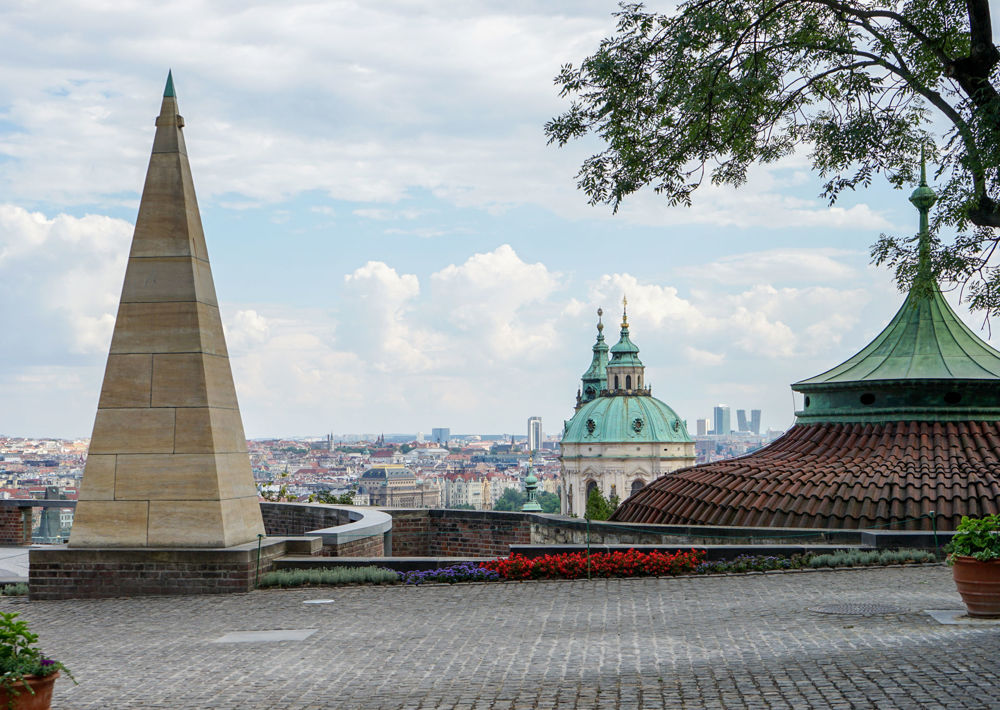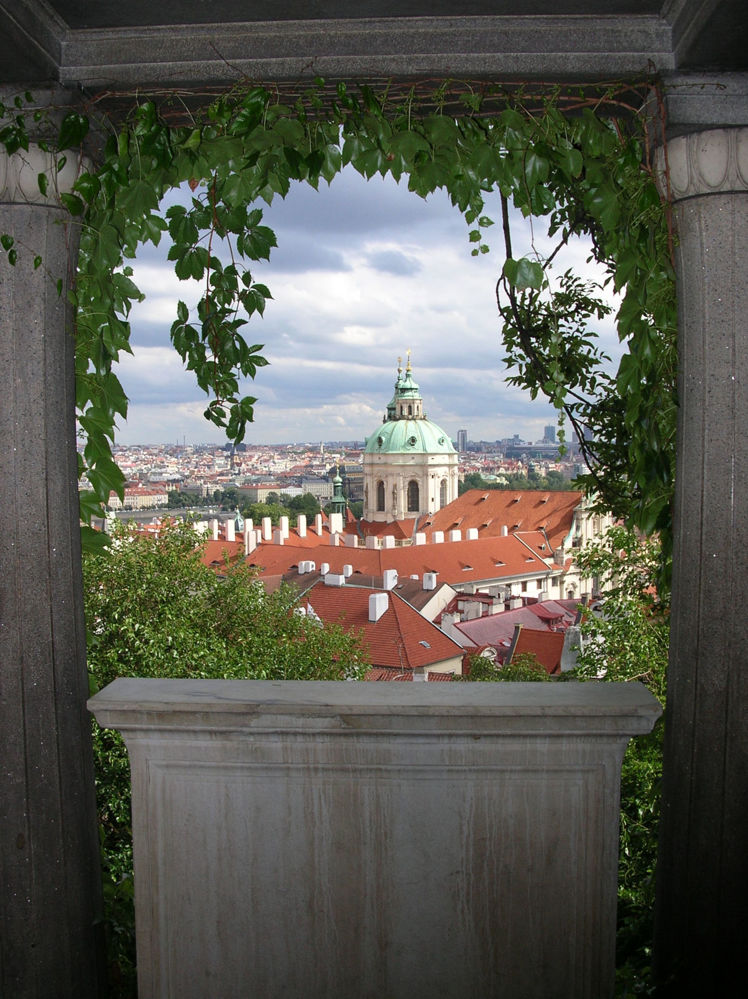In 1920, Tomas Masaryk, the first president of the Republic of Czechoslovakia, asked Slovene architect Josip Plečnik to restore the Prague Castle as a new symbol of independence and democracy. From 1920 to 1934, Plečnik completed various projects around the Castle.

One of his work is also the Garden on the Ramparts - from where you can enjoy a great view of the whole city of Prague. Its surface area covers 1.43 hectares. The garden is accessible from the Prague Castle’s third courtyard via Plečnik’s Staircase called the Bulls’ Staircase.
The staircase was built in 1929-1931. Design of the staircase is influenced by ancient Minoan art and its name is derived from bronze bulls holding the roof of the northern staircase entrance.As you enter it, you will leave the enclosed courtyard and enter the open space of the spacious castle gardens. A wonderful view will open up in front of you.
It was this garden, where the Catholic governors Jaroslav Bořita of Martinice and Vilém Slavata of Chlum fell after being thrown out of the windows of the Old Royal Palace in 1618. The event is commemorated by two early-Baroque sandstone obelisks.
Plečnik’s observation points spread throughout the entire garden: Small bellevue, Great bellevue and Moravian Bastion observation point. In the last one, Plečnik placed a granite monolith with Ionic head, carrying a gold-plated ball and a granite desk. The small observation point with the obelisk is opposite the Bulls’ Staircase and provides access to the Hartig Garden. The Great observation point is located on the observation path under the former Institute for Noble women - Plečnik’s antique-imitating column hall dating back to 1924 - 25, in front of which there are three groups of light-bearers.

The interesting part is, that most of the artists of the time reached for stones from proven European mines with a century of tradition and quality production. Plečnik was very well aware of the important position of Prague Castle in the sphere of national sentiment, and therefore, although a foreigner, he tried to use materials exclusively from Czech sources. Thanks to this, there was also a great promotion of local quarries and the revival of the stone mining industry in the then Czechoslovakia. In addition to the stones that were among the most commonly used, such as the Mrákotín granite used on stairs and beams, he was not afraid to reach for completely non-traditional types. The golden marl, which until then was used only as a building material, was used for the first time for wall cladding. The black columns made of cut Prachatice diorite, previously known only in southern Bohemia, have a very exotic effect.
Bull staircase together with paving of first and third courtyard became a tribute to Czech minerals and their processing.




